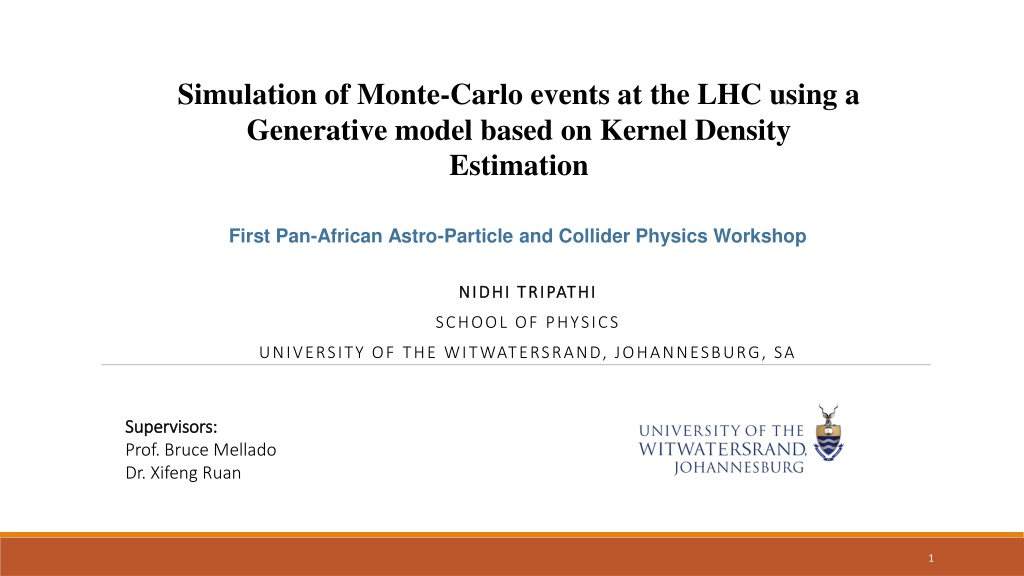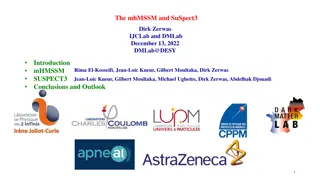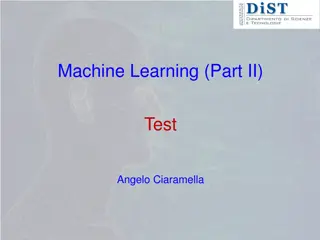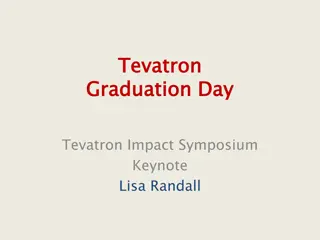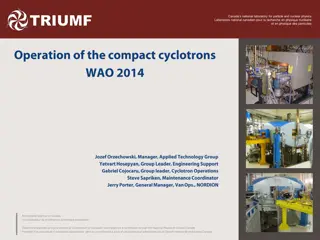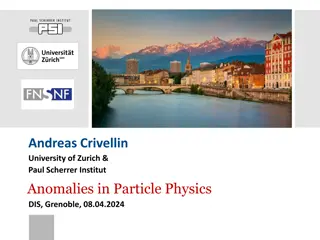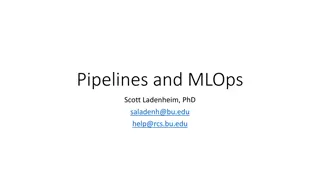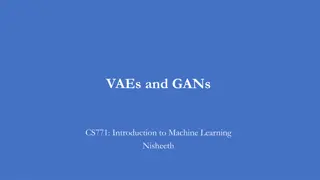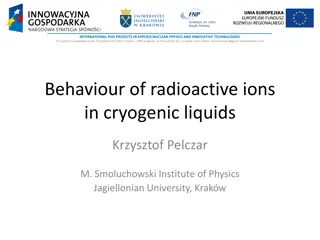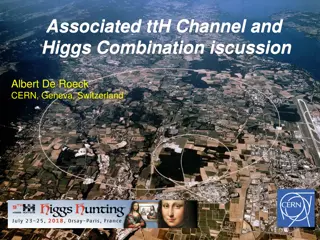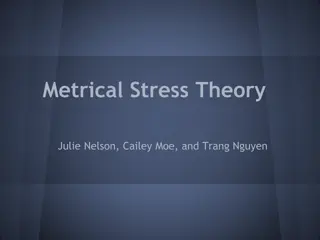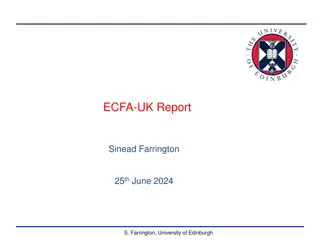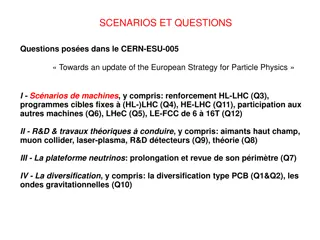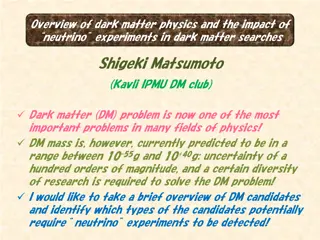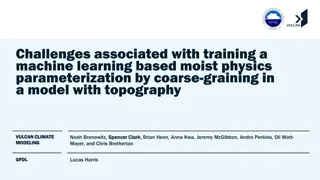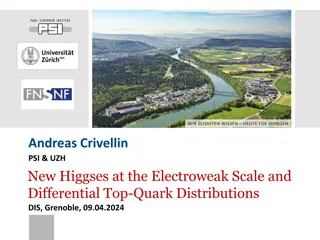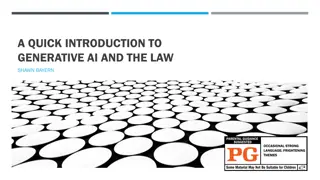Machine Learning and Generative Models in Particle Physics Experiments
Explore the utilization of machine learning algorithms and generative models for accurate simulation in particle physics experiments. Understand the concepts of supervised, unsupervised, and semi-supervised learning, along with generative models like Variational Autoencoder and Gaussian Mixtures. Learn about Kernel Density Estimation for probabilistic density function estimation in random variables.
Download Presentation

Please find below an Image/Link to download the presentation.
The content on the website is provided AS IS for your information and personal use only. It may not be sold, licensed, or shared on other websites without obtaining consent from the author. Download presentation by click this link. If you encounter any issues during the download, it is possible that the publisher has removed the file from their server.
E N D
Presentation Transcript
Simulation of Monte-Carlo events at the LHC using a Generative model based on Kernel Density Estimation First Pan-African Astro-Particle and Collider Physics Workshop NIDHI TRIPATHI NIDHI TRIPATHI SCHOOL OF PHYSICS UNIVERSITY OF THE WITWATERSRAND, JOHANNESBURG, SA Supervisors: Supervisors: Prof. Bruce Mellado Dr. Xifeng Ruan 1
Outline Outline 1.Introduction. 2. Results. 3. Conclusion. 2
Introduction Introduction Machine Learning Machine Learning Machine learning algorithms are used to make a prediction or classification. Machine learning algorithms are generally used for different applications such as weather forecasting, stock trading, facial recognition, medical prediction, spam detection and commodity sales among others. Machine learning is a sub-fields of artificial intelligence. Ref: https://www.ibm.com/za-en/cloud/learn/machine-learning#toc-machine-le-SzgJbkmk 3
Machine Learning Methods Machine Learning Methods Introduction Introduction Supervised Learning Supervised machine learning: Unsupervised machine learning: Semi-supervised learning: Unsupervised Learning 4
Introduction Introduction Generative Models Generative Models In recent years generative model rapidly being applied, adapted and developed for fast, accurate simulation essential for particle physics experiments. A generative model tries to learn the probability distribution that generates the sample data. A Generative Model is a powerful way of learning any kind of data distribution using unsupervised learning. Types of generative model are: Variational autoencoder Generative adversarial network Gaussian Mixtures Kernel Density Estimation 5
Introduction Introduction Generative Models Generative Models In recent years generative model rapidly being applied, adapted and developed for fast, accurate simulation essential for particle physics experiments. A generative model tries to learn the probability distribution that generated the data. Types of generative model are: Variational autoencoder Generative adversarial network Gaussian Mixtures Kernel Density Estimation 6
Kernel density estimation Kernel density estimation Introduction Introduction Kernel density estimation or KDE is a non-parametric way to estimate the probability density function of a random variable. In other words, the aim of KDE is to find probability density function (PDF) for a given dataset. With this generative model, new samples can be drawn. For a sample of (x1,x2, ,xn) the kernel density estimate, is given by: p(x)=1 ? ?=1 ? ? ?? ? Source: Wikipedia where K(a) is the kernel function and h is the smoothing parameter, also called the bandwidth. Ref: https://en.wikipedia.org/wiki/Kernel_density_estimation#:~:text=In%20statistics%2C%20kernel%20density%20estimation,on%2 0a%20finite%20data%20sample. 7
Tuning The Bandwidth Parameter Tuning The Bandwidth Parameter Introduction Introduction The scikit-learn library allows the tuning of the bandwidth parameter via cross-validation and returns the parameter value that maximizes the log-likelihood of data. The function we can use to achieve this is GridSearchCV(), which requires different values of the bandwidth parameter. Source: Wikipedia 8
KDE Results KDE Results In the search for new bosons, the Z final state data is used as a pure background sample. Using Scikit-learn and NumPy libraries the KDE generative model is constructed to take the pre-processed Z data and generate a sample dataset. Z fast simulated dataset: ['mlly', 'phi_zy', 'eta_zy', 'pt_zy', 'e_zy', 'mll', 'phi_ll', 'eta_ll', 'pt_ll', 'e_ll', 'dR_ll', 'MET', 'MET_phi', 'Nj', 'Ncj', 'dPhi_ll', 'dPhi_METZy', 'llpt_mlly'] 9
KDE Results KDE Results Bandwidth= 0,01, Sample Size= 100,000 Frequency Frequency 10
KDE Results KDE Results Bandwidth= 0,01, Sample Size= 100,000 Frequency Frequency 11
KDE Results KDE Results Bandwidth= 0,01, Sample Size= 100,000 Frequency Frequency 12
KDE Results KDE Results Correlation heatmap Correlation heatmap Original Events Generated Events 13
KDE Results KDE Results Original data pair plot Original data pair plot Generated data pair plot Generated data pair plot 14
Conclusion Conclusion Kernel density estimation (KDE ) sampling model performs well. The performance of KDE model degrades exponentially with high dimensional data sets, this phenomenon is called curse of dimensionality . Continue investigation for better KDE performance on new datasets. 15
